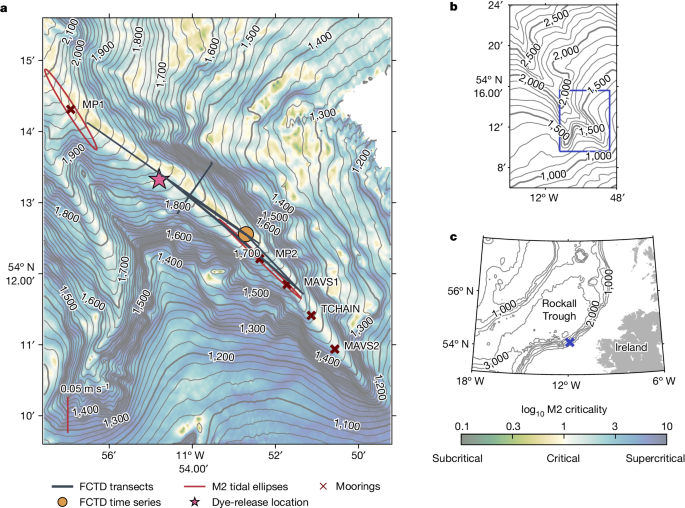2024-07-09 カリフォルニア大学校アーバイン校(UCI)
<関連情報>
- https://news.uci.edu/2024/07/09/globally-significant-upwelling-is-driven-by-topographical-features-on-seafloor/
- https://www.nature.com/articles/s41586-024-07411-2
傾斜した海底渓谷におけるダイアピクナル・アップウェリングの観察 Observations of diapycnal upwelling within a sloping submarine canyon
Bethan L. Wynne-Cattanach,Nicole Couto,Henri F. Drake,Raffaele Ferrari,Arnaud Le Boyer,Herlé Mercier,Marie-José Messias,Xiaozhou Ruan,Carl P. Spingys,Hans van Haren,Gunnar Voet,Kurt Polzin,Alberto C. Naveira Garabato & Matthew H. Alford
Nature Published:26 June 2024
DOI:https://doi.org/10.1038/s41586-024-07411-2

Abstract
Small-scale turbulent mixing drives the upwelling of deep water masses in the abyssal ocean as part of the global overturning circulation1. However, the processes leading to mixing and the pathways through which this upwelling occurs remain insufficiently understood. Recent observational and theoretical work2,3,4,5 has suggested that deep-water upwelling may occur along the ocean’s sloping seafloor; however, evidence has, so far, been indirect. Here we show vigorous near-bottom upwelling across isopycnals at a rate of the order of 100 metres per day, coupled with adiabatic exchange of near-boundary and interior fluid. These observations were made using a dye released close to the seafloor within a sloping submarine canyon, and they provide direct evidence of strong, bottom-focused diapycnal upwelling in the deep ocean. This supports previous suggestions that mixing at topographic features, such as canyons, leads to globally significant upwelling3,6,7,8. The upwelling rates observed were approximately 10,000 times higher than the global average value required for approximately 30 × 106 m3 s−1 of net upwelling globally9.



